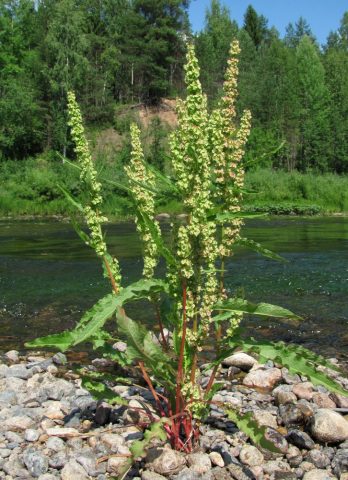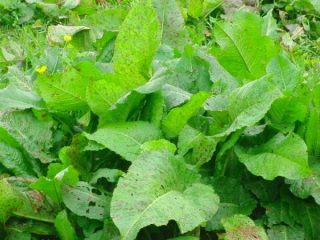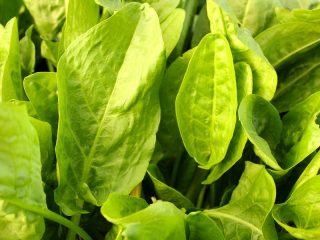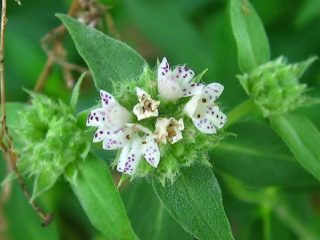Content
Curled sorrel is widely used in traditional medicine recipes. The ancestors also prepared medicinal compresses from it, which helped to relieve inflammation. The root and leaves of the herb were regularly used as an antiparasitic agent. However, today the herb can be found in many medicines. Due to their high efficiency, preparations based on sorrel are gaining immense popularity.
On the basis of a useful perennial, various dietary supplements and medicinal teas are made. The main advantage of these funds is saving time for procurement and the availability of instructions for use to achieve a therapeutic effect.
Description of the plant
A perennial plant has a tap root system. The stem of a useful herb can reach a length of 50 to 120 cm. A perennial is capable of growing in any climate, adapts well and develops in various conditions. The native land of curly sorrel is Japan.
The leaves of curly sorrel are long, rod-shaped, and sour to the taste. In the first 2 years after planting, a rosette is formed in the plant, which is collected from the leaves, and closer to 3 years, the main stem thickens.
A plant of the buckwheat family, has small inflorescences. The tufts are collected in neat brushes, creating a green-red panicle. The fruits are harvested in a triangular achene shape. The plant begins to bloom in early June. The final harvest period is July. By this time, the leaves become rough, contain an abundant amount of acid, which, if used incorrectly, can harm health.
The active flowering period begins in mid-spring. The flowers are small, neatly gathered in buds, green-brown in color.
Herbaceous perennial belongs to crops that love abundant watering. Therefore, for a good harvest, it is important to provide the perennial with a sufficient amount of moisture. Sorrel is quite frost-resistant, not afraid of sudden changes in temperature.
Where grows
Curly sorrel grows in loams and soils with an average ph. At one place weed can grow for more than 4 years. Curly sorrel loves moisture, so it is very common to see it in wetlands.
Useful properties and contraindications
The plant is quite popular in medicine. On the basis of curly sorrel, not only home remedies are prepared, but also pharmaceuticals. For cooking, use the root, stem and leaves.
The root contains a huge amount of ascorbic acid, which is responsible for the body's defenses. Also curly sorrel is rich in vitamins:
- K;
- B1;
- B2;
- PP.
The composition also contains multinuclear compounds, anthraglycosides, iron and tannins.
Useful properties of leaves:
- improve the functioning of the digestive tract;
- have an astringent effect;
- accelerate wound healing;
- strengthen the gums;
- used for scurvy.
The root has a rich composition of useful components:
- has a tonic effect;
- used as a sedative;
- increases the body's defenses;
- used as an antipyretic agent.
Due to its high acid content, the herb is not useful for everyone. Herbal infusions are not recommended for those who have increased stomach acidity.
It is also contraindicated to use curly sorrel for people who have stomach ulcers. In any case, the use of medicinal herbs must be agreed with the attending physician.
The use of curly sorrel
The plant has a pleasant taste, so young leaves are regularly used in cooking. Soups are made from greens, cold dishes are prepared in the form of okroshka or vitamin salads. Older leaves contain more acid, so they should be used with extreme caution.
The perennial application does not end there. The herb is widely used not only in cooking, but also in recipes for folk and traditional medicine.
It is worth noting that curly sorrel root is used to treat gynecological diseases. Also, such decoctions are good for bleeding. Many doctors recommend drinking infusions with low hemoglobin.
Many women use vitamin infusions for chronic diseases of the genitourinary system. A decoction from the leaves is capable of having a diuretic effect - it removes pathogenic bacteria from the body. Thanks to this, you can quickly recover from cystitis, urethritis. Perennial is widely popular for rheumatism and hemorrhoids. Often, the remedy is effective in treating the spleen and lymph nodes.
The most widely used infusion of the root for the treatment of bronchial asthma and obstructive bronchitis. In addition, the herb of the buckwheat family is considered a very effective remedy for purulent processes in the auricles and conjunctivitis.
Control measures
Curly sorrel belongs to a weed plant, and often do great harm to planted crops. Often, the weed is the source of a fungal disease, which is why it has curly leaves. In order to avoid damage to other crops, agrotechnical and chemical methods of combating curly sorrel are used.
Agrotechnical methods:
- when planting crops, use seed pre-treated against pests;
- adhere to crop rotation;
- to carry out 2-time processing of the soil with top dressing;
- regularly clean the area of weeds;
- at the initial stage of plant growth, perform deep root pruning.
Chemical methods include treatment with a special preparation "Iskra DE".
Conclusion
Curled sorrel has long been recognized in official medicine as a tonic, hemostatic and disinfectant. It is widely used in the treatment of a huge range of diseases. Thanks to infusions from a useful herbaceous plant, gynecological diseases can be cured, the digestive tract can work better and the body's defenses can be increased.









